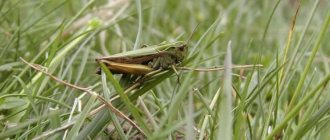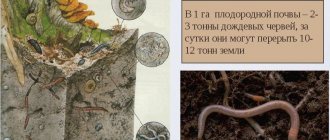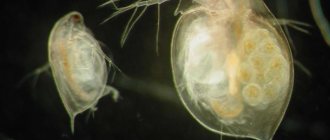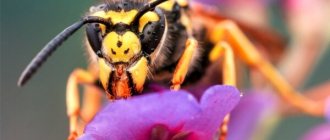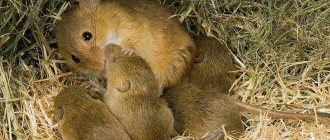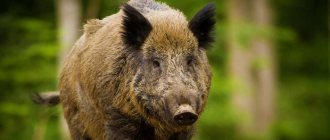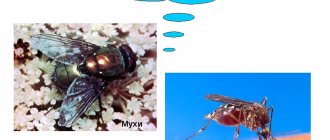- Wild animals
- >>
- Insects
The world of insects is huge with different varieties of animals. One of the most extraordinary and interesting specimens is the steppe rack . This is a relatively small insect that rarely has anyone been able to see in the wild with their own eyes. The animal is not numerous and lives only in the steppes, on slopes, hills and lowlands, which are completely covered with dense vegetation, wild cereals, and wormwood. What kind of insect is this “steppe rack”? Let's get to know him better.
Origin of the species and description
Photo: Steppe rack
A huge number of different insects are found in meadow and steppe herbs. Among them, one cannot fail to note a rather large grasshopper. Many people do not even suspect that this is not just a grasshopper, but a steppe rack - a very rare and unique animal. Seeing such an insect with your own eyes is a great success. Its number, unfortunately, is constantly decreasing. The steppe rack is an arthropod type of animal; it is included in the class Insects and the order Orthoptera. Due to its large dimensions, today it is the largest in the grasshopper family.
Interesting fact: The steppe rack is not only the largest representative of grasshoppers, but also the most unique. There are no males among the insects of this species. All hinds are females!
How can you recognize a steppe rack? You can recognize it, first of all, by its unusual size for an ordinary grasshopper. This is a large grasshopper, the length of which, on average, can reach eighty millimeters. And this does not take into account the ovipositor. It usually does not exceed forty millimeters in size. In nature, there were adult specimens of larger dimensions - about fifteen centimeters.
The color of steppe hinds does not differ from other representatives of their family. Their body color is green. Less commonly, you can find adult grasshoppers with a brownish-yellow color. The body of these insects is very elongated, and on the sides you can see longitudinal stripes, the color of which is much lighter than the general color of the body.
Security measures
Despite the significant distribution area, the insect population density is low. This is due to the behavioral characteristics of predatory insects and the reduction of available places to live. The secretive lifestyle does not allow one to count the exact number of steppe racks. The most favorable conditions for insects are observed in some areas of the Stavropol Territory, the North Caucasus and Karachay-Cherkessia. Large undeveloped steppe areas remain in these regions.
The large and rare grasshopper is listed in the Red Book of the Russian Federation in the second category, as a species declining in number. It is protected in reserves and reserves - Bashkir. Zhigulevsky, Khopersky. To restore the population, it is necessary to create protected areas around which the use of insecticides when cultivating arable land will be prohibited. A critical situation with the decline of the species has developed in all countries of its habitat. SagaPedo are included in the IUCN Red List 96, the Berlin Convention Annex and the European Red List.
The steppe racket is a beneficial entomophage - an insect that controls the number of pests of agricultural crops. This is a part of nature that descendants should see.
Appearance and features
Photo: Steppe grasshopper
The steppe rack has a characteristic appearance. Large dimensions. In the family of true grasshoppers, this species is the largest. The average size of such an insect is about eight centimeters, but sometimes larger individuals are found - up to fifteen centimeters in length. The elongated body is green. There are lighter stripes on the sides.
Video: Steppe rack
Small head, sharply sloping forehead. The head has the shape of a cone, it is slightly compressed from the sides. The mouth organs of the steppe rack are very powerful and gnawing. Mandibles can easily bite the throat of prey. Has long, pronounced antennae. The length of the antennae reaches, on average, four centimeters. The antennae play an important role. They perform the function of touch. Also, big eyes. The vision of such grasshoppers is excellent, the eyes are well developed.
The steppe rack has three pairs of legs: front, middle and rear. The front and middle legs are used for running and catching prey. These insects are predators. The front legs serve as a tool for securely capturing prey. The hind legs are most likely designed for jumping. They are stronger and much longer. However, the hind legs almost never jump. The wings are vestigial. Some adults do not have them.
Anatomy of a grasshopper
The grasshopper has an oblong body, ranging in size from 1.5 to 15 cm in length, depending on the type of insect. Its body is conventionally divided into three sections: head, chest and abdomen. The grasshopper has two pairs of wings - front and rear, with the help of which it rises into the air and flies short distances. The grasshopper's head is large with very long antennae, which sometimes exceed the length of its body and are the insect's organ of touch. The eyes are large. The color of a grasshopper also depends on its habitat; it can be green, brown or even striped. Females are larger than males.
The grasshopper has 3 pairs of legs. At the same time, he uses his front legs for walking, and with the help of his hind legs he can jump quite high and far. This insect chirps using its elytra. One elytra plays the role of a bow, and the other - a resonator. By vibrating their elytra, grasshoppers produce unique sounds. Moreover, each species has its own unique sounds. Males chirp most often. But in some species, females also chirp. Another interesting fact is that grasshoppers' ears are located on their front legs.
Where does the steppe rack live?
Photo: Steppe rack in Russia
The steppe rack is a rare and unique animal that requires special conditions to live. These animals are suitable for temperate climates and grass-forb steppes. These are ideal conditions for such animals, which is why bucktails are most often found in the steppes. However, individual populations of grasshoppers also live in other landscape conditions: on hills, mountains and lowlands, densely overgrown with vegetation. Steppe moths prefer to live and breed in bushes, grass and cereal vegetation. In some places they live in thorn thickets. Not many individuals live in the mountains. Steppe hinds do not settle above one thousand seven hundred meters above sea level.
Interesting fact: The steppe rack appeared in the USA artificially. In the seventies of the last century, it was specially brought to Michigan from Italy. Despite its artificial appearance in the United States, the steppe rack quickly adapted there and took root well.
The natural habitat of steppe bucks is relatively small. It includes southern Europe, the Crimean peninsula and the Mediterranean area. The natural range includes the Pyrenees, Balkans and Apennines. These huge grasshoppers are almost evenly distributed across the steppes adjacent to the Black Sea coast. Also, individual populations of such insects are found in unplowed fields of Russian territory. There are a small number in Saratov, Voronezh, Rostov, Chelyabinsk and other regions.
Now you know where the steppe rack lives. Let's see what she eats.
Distribution area
The steppe grasshopper is found in Europe and Asia. The homeland of the species is considered to be the Mediterranean. The southern border of the species distribution is the island of Sicily, the northern border is the Kurgan region of Russia. Known habitats are in Slovakia, Hungary, Spain, Ukraine, Georgia and Kazakhstan. The grasshopper is distributed in the steppe zone of Central Asia to China. In Russia, the habitats are the regions of the European part and Western Siberia.
A large grasshopper has been recorded in the foothills and plains of Dagestan, the steppe regions of North Ossetia, and Chechnya. In the Azov steppes of the lower Don, the ridge was noted in the Rostovsky nature reserve, near populated areas and in the area of the Rostov-on-Don botanical garden.
Favorite habitats are feather grass, overgrown with forbs. Insects feel no less comfortable on the slopes of ravines, rocky landscapes overgrown with bushes, and in wormwood fields. In the south of Europe, dams are found in cereal fields, vineyards, and pastures. Adults and larvae prefer to hide in dense grass and bushes. In the Don River delta, grasshoppers have taken a liking to thorny thickets of thorns. Dybki prefer to settle on plains and slopes, but under unfavorable conditions they climb into the mountains to a height of up to 1500 m.
What does the steppe rack eat?
Photo: Steppe rack from the Red Book
The steppe rack can be called a rather dangerous predator. This animal has good hunting skills. It has well-developed vision, tenacious front paws, and a strong mouthparts that can easily bite the throat of victims. The insect can also move quickly through vegetation and ground. If necessary, it can freeze in one place for a long time in order to wait for the most opportune moment to attack. Sometimes they spend the whole night hidden in the grass.
The hunter's invisibility plays a huge role in the hunting process. The steppe rack is very lucky in this too. Its green color makes it easy to camouflage itself in the thick of grass and other vegetation. The elongated structure of the body also helps in camouflage. From afar, it can be mistaken for a plant stem, so potential victims of the insect do not know until the very end that they are already being hunted.
Interesting fact: Large grasshoppers can withstand hunger for a long time. However, in very critical situations, these insects can even eat parts of their own body, not to mention their relatives.
So, the diet of the steppe rack includes:
- praying mantises;
- locusts;
- various beetles;
- flies;
- their closest relatives are small grasshoppers.
Steppe hinds feast on many insects, but some of them are categorically avoided. For example, they do not eat bedbugs, which is associated with a very pungent and unpleasant odor. Bedbugs secrete a special liquid. Also, dybki do not eat scaly butterflies. For them, such a delicacy can be fatal. Butterflies can completely clog the mouthparts.
Short-whiskered Orthoptera (Caelifera)
The locusts belong to the short-whiskered species. Probably, many of you have heard such names as Asian locust, locust, grasshopper, grasshopper - all these are different types of locusts. These orthoptera insects have a gnawing mouthpart and feed on plant matter. Their upper jaws are especially well developed. On the cutting surface of the upper jaws there are teeth, by the structure of which one can determine what a particular type of locust feeds on. If many teeth have a rough ribbed surface and look like small graters, then you have an insect that feeds on rough food, including cereals. If there are few teeth and they are not so strong, it means that the insect’s main food is tender broad-leaved plants.
Features of character and lifestyle
Photo: Steppe rack
The steppe rack is an animal that does not live very long. The life cycle is only one year. All year round, insects are nocturnal. During the day they prefer to rest, hiding in the thick of vegetation. To live, the hare chooses places with thick grass, wormwood or wild cereals. They prefer to live and breed in the steppe, on hills and mountains, located away from people. The distribution of the population can be called sparse. This is due to the fact that each adult grasshopper has its own hunting territory.
All steppe fishes are predators. At dusk, they emerge from their hiding places and begin to hunt various beetles, locusts, mantises, flies and smaller grasshoppers. Sometimes they feast on small invertebrates. During the hunt, the steppe rack can remain motionless for several hours, tracking down its prey. However, often everything goes much faster and easier. The rack firmly grasps its prey with its paws and inflicts a bite on its neck. The bite is fatal, so the animal can simply eat slowly.
Having had enough of its fill, the steppe rack spends the rest of the night and day practically motionless. It is easily lost between dense vegetation due to its camouflage body color. The character of such an insect cannot be called calm. Grasshoppers have a fighting spirit. In case of danger, the animal first tries to escape, but if this is impossible, then it takes a threatening position. If you catch a rack, it can even bite painfully.
Orthoptera (Ensifera)
The next suborder of long-whiskered orthoptera unites insects that are completely different in appearance - grasshoppers and crickets. These Orthoptera have long bristle-like antennae, the length of which, in most cases, exceeds the length of the body. Many grasshoppers are able to jump a distance of 20 times their body length. Grasshoppers, like locusts, overwinter in the egg stage. Among grasshoppers, there are both predatory and herbivorous species.
photo: Janos Bodor
In the damp places of the steppe lives the well-known, very common green grasshopper (Tettigonia viridissima), whose diet consists of small insects. The gray pipit (Decticus verrucivorus) lives in open, dry areas of the steppe. Like most of the Orthoptera squad, it successfully camouflages itself and takes off at the last moment. It takes off noisily, with a bang, needless to say, good protection from pursuers! The gray pipit feeds on both plants and insects.
Steppe rack
One of the most remarkable and largest grasshoppers is, of course, the steppe grasshopper (Saga Pedo). Its body length is 6-8 cm. The steppe rack is a predatory insect. It feeds on locusts, crickets, beetles and bugs, and also catches large grasshoppers and can even cope with an ordinary praying mantis.
Orthoptera insects are represented by the superfamily of crickets, which includes crickets and mole crickets. Mole cricket (Volchok) is an insect that leads an underground lifestyle and feeds on plant roots and insect larvae. The top digs tunnels of a special shape, due to which the sound it makes is amplified by an echo. These orthoptera have wings and can fly.
Medvedka
Most of you know all these insects well, but each representative of Orthoptera is a unique and special creature. In the steppe you can find another original family - these are stem crickets (Oecanthidae). This delicate insect with a yellowish or greenish body has the same elytra as in crickets, which lie flat on the back and are almost completely occupied by the chirping organ, the legs are long and thin. Their wings have lost their main purpose - the ability to fly.
Stem grasshopper
Stem crickets spend almost all of their time on the plants they feed on. During the day they hide under the leaves, and in the evening and at night the males chirp loudly. In some regions they may cause minor damage to crop plants.
Interesting Orthoptera are bush crickets, large flightless crickets that are also known as long-legged pipits. These orthoptera live in trees, masquerading as dead leaves. In a moment of danger, they rise into the air, opening their wings and showing the colored eye-like dots depicted on them. Most bush crickets are predators that feed on other insects and even small lizards.
Cricket Veta photo: Richard Mayston
Endemic to New Zealand, the weta is a cricket with long, spine-covered hind limbs that it uses to ward off predators. Some species can even bite the offender. Veta is nocturnal, crawling out of its hiding place only after dark to feast on plants and mushrooms. There are over 100 known species of weta, all of which live in New Zealand.
Social structure and reproduction
Photo: Steppe grasshopper
The steppe rack is the only representative of the genus in which there are no male individuals. Many scientists have analyzed and studied this issue in detail. Sometimes male grasshoppers of similar species of animals were mistaken for male grasshoppers. However, it was never possible to prove the existence of males. This feature of this type of insect greatly affected their lifestyle and the reproduction process.
Females of the steppe rack do not need to look for a mate for themselves in order to prolong the genus. They have a parthenogenetic method of reproduction, that is, eggs develop in the animal’s body without prior fertilization. Adults are ready to reproduce approximately three to four weeks after becoming adults. Typically this stage occurs in the month of July.
Eggs are laid by insects in a special ovipositor - this is a rear organ, which consists of several pairs of appendages. Before laying eggs, the female carefully examines the soil. The ovipositor and antennae help her in this. With their help, it is possible to find the most optimal place for the eggs, where the larvae will then develop. Eggs are laid in the evening. At one time, the steppe rack is capable of laying about seven pieces. At the same time, in the body of the female herself, the process of egg maturation does not stop. The last clutch is carried out in September, after which the female dies.
The eggs remain in the soil and remain unchanged throughout the winter. Only with the arrival of warmth do larvae begin to emerge from the eggs. The first larvae are about twelve millimeters long. Over the course of one month, their active development occurs. In thirty days the larva increases in size approximately ten times. This completes the process of transformation into an adult.
Fat guy
The species is European, is on the verge of extinction, included in the species of large grasshoppers. Males of the species are 8 cm long. The length of females is 6 centimeters.
The names of grasshoppers are often based on their appearance. A fat man, for example, looks plump, even fat. Due to this, the visually black-brown body of the insect appears shorter. Volume is also added by sharp keels on the sides of the grasshopper's pronotum.
Fat grasshopper
Greenhouse grasshoppers
They are hunchbacked and stocky. The body of greenhouse grasshoppers is shortened, but females have a long ovipositor. Representatives of the genus are also distinguished by long legs and mustaches. The latter reach 8 centimeters.
Natural enemies of steppe racks
Photo: Steppe rack in nature
The steppe rack itself is a predator and poses a great danger to many beetles, grasshoppers, mantises and other insects. The animal has powerful jaws, tenacious legs and moves quickly. However, all this does not protect it from many natural enemies. It would seem that the rack has excellent camouflage. Its body is very similar to the stem of a plant, and its color makes it easy to get lost among the greenery. But even this does not save the hinds from various predators.
The most dangerous for these animals are:
- spiders;
- scorpions;
- centipedes;
- various parasitic organisms. Some of them lay eggs directly into the body of grasshoppers, which leads to the slow death of the latter;
- birds of prey. Almost all large birds will not refuse to feast on such a large grasshopper;
- rodents; The steppes are home to many rodents that deftly catch steppe fish. For them, such hunting is not difficult, because during the daytime grasshoppers rest and lose their vigilance.
Lifestyle
The green grasshopper (photo above) is most active from May to September, and by time of day - from dusk. Favorite places of settlement are chernozem soil of medium or low humidity overgrown with weeds and bushes.
The gluttony of these insects is incomprehensible. During periods of abundance, they are able to hunt for days on end, and wait for prey, using their camouflage, in a motionless state. At the right moment, when a gaping small insect finds itself in an area of free access, the “little green one” suddenly throws out its front pair of legs in front of itself and firmly grabs the victim. The power of the jaws (mandibles) is so great that the chitinous skeleton of any insect is not a problem for them. If the hunt does not bring results, the grasshopper’s diet consists of greens, and, on occasion, its own less dexterous brothers.
What if someone attacks him, a representative of the Orthoptera order? The grasshopper will begin to actively resist, using its jaws and all three pairs of legs. The insect tries to scare off large encroachers on its life with a special odorous secretion.
Population and species status
Photo: Steppe rack in Russia
The steppe rack is a unique animal. But, unfortunately, such representatives of the grasshopper family are becoming less and less every year. Today this animal is rare and is listed in the Red Book. The population of huge grasshoppers is very small and sparse. In the future, if certain measures are not taken, this unique creature may completely disappear from the face of the Earth.
The main factors that negatively affect the number of steppe ducks are the destruction of their own kind. A certain share of the blame for the extinction lies with the steppe racks themselves. They have a rather warlike character and the phenomenon of cannibalism is present. Also, the development of wild nature by humans. Many territories that belong to the natural habitat of grasshoppers are being actively developed by people. Because of this, animals lose places to live and reproduce.
Another reason is environmental changes on the planet. Dirty air, bad water, soil - all this cannot have a positive effect on the number of insects. Gradual changes in climatic conditions also have a certain impact. Dry grass has fallen. Because of this, many rare species of animals are dying. Recently, they have been trying to combat this phenomenon by urging people not to burn the grass. In some countries, there are even fines for burning dry grass.
Spiny Devil
Looking at the types of grasshoppers in the photo, it’s hard not to stop looking at the devil. It is emerald in color and covered with triangular needles. They are located all over the body.
The length of the devilish grasshopper does not exceed 7 centimeters, although it is a tropical inhabitant. However, the sharp needles and the insect's manner of waving its limbs in front of its enemies scare away the latter. The devil does this in the forests of the Amazon basin.
Spiny devil grasshopper
Exotic grasshoppers are also found among ordinary ones. Here it is no longer a matter of species, but of genetic anomalies. In the world of grasshoppers, erythrism occurs. This is the absence of pigment. Erythritated grasshoppers resemble albinos, but not the former ones. Pink coloring occurs in one individual out of 500. Erythrism in grasshoppers was discovered in 1987.
Finally, we note that in the eyes of ordinary people, grasshoppers are not only true representatives of the suborder, but also crickets and fillies. The latter have shorter antennae and stockier bodies. Crickets have a spherical head and a flat and short body.
Yellow-bellied Snake
These snakes are large in size, some individuals reach 2-2.5 meters. The dorsal scales are painted in dark colors, the lower part of the body has a yellow tint. The snake feeds on rodents, birds, lizards and other snakes. From November to March it hibernates. The yellow-bellied snake is not poisonous, however, if threatened, it can inflict painful bites. Natural enemies include copperheads, foxes, eagles and martens.
Kulan
The kulan is related to donkeys, zebras and wild horses. The body length of an adult animal can reach 2 m, weight varies from 120 to 290 kg. Kulan is capable of running at a speed of 60 km/h. These equid mammals live in herds; the leader gives a signal in case of danger. Kulans are unpretentious in food; they can eat both fresh herbs and dried grains. In winter, in search of food, they dig through the snow with their hooves. Kulans tolerate thirst well and can drink brackish water from desert lakes. Wolves pose a serious threat.
